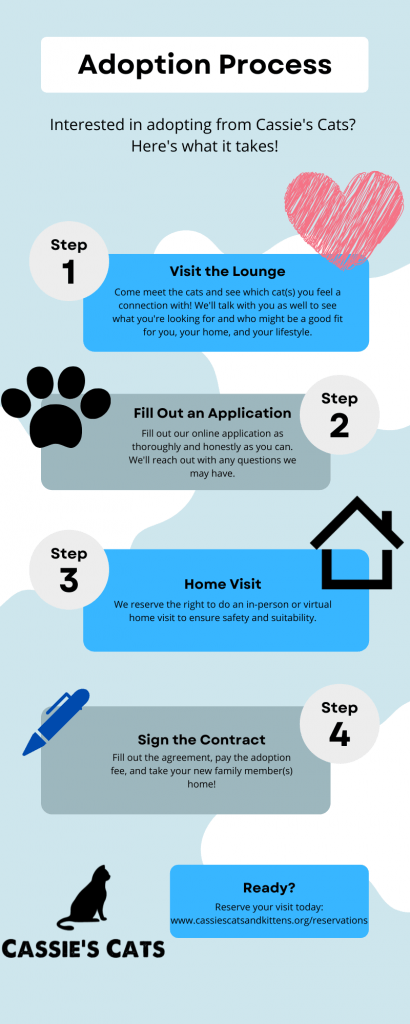“Kitten season” is the time of year when kittens are being born and in Ventura County it’s nearly a year-round. Mild winters with little rain mean unaltered males and females are roaming and finding one another. Along with every other rescue and shelter in the area, we have been bombarded with requests to help with kittens for the last 5 months. Requests come both within and outside of Ventura County, as the problem of overpopulation is widespread and challenging.
When we are able to say yes to taking in kittens we do. We’ve taken in 20 since March: Monte, the Seinfeld kittens, the Schitt’s Creek kittens, Mia’s 4, Luna’s 4, and the I Love Lucy kittens. This is happening in foster homes, on top of running the lounge and taking care of the young adults and adult cats there. Just running the lounge and looking after the health and well-being of the cats there costs a certain amount of money month to month. Kittens add on a whole new level of expense that adoption fees barely even begin to cover. Let’s break it down…
Spay/neuter and other medical: Each kitten in our care will be spayed/neutered, microchipped, and tested for FIV and FeLV. On average this costs us $90 per kitten. We can do vaccinations in-house and that typically runs about $14/kitten for two doses. Dewormers, antidiarrheals, probiotics, and other treatments add on to those totals.
Food: from about 5-6 weeks on, kittens are weaning. It’s fair to assume that we will be feeding a kitten wet food and some kibble for 5 weeks while in foster. This amounts to roughly $90 in wet food and $27 in dry food.
Litter: one 20-pound bag of non-clumping pellet litter runs about $10.
Adding that up, we come to approximately $231+ per kitten when they are weaned and we have them for about 5 weeks. Each additional week adds another $23 in food. Our adoption fees are $150 for one kitten, $225 for a pair.
In order for us to say yes to helping kittens, while still running the lounge and caring for our adult cats there, we simply must do more fundraising. Please know that when you shop in our lounge, donate to a Facebook fundraiser, pay the entrance fee to visit, or simply make a contribution you are helping us say yes. We have to say no way too often, and we appreciate being able to say yes when we can. You can donate here. Thank you!


